 Weird Stuff
Weird Stuff  Weird Stuff
Weird Stuff  Our World
Our World 10 Archaeological Discoveries of 2025 That Refined History
 Weird Stuff
Weird Stuff 10 Fascinating Facts You Might Not Know About Snow
 Miscellaneous
Miscellaneous Top 10 Things Crypto Was Supposed to Change & What Actually Did
 History
History 10 Huge Historical Events That Happened on Christmas Eve
 Music
Music 10 Surprising Origin Stories of Your Favorite Holiday Songs
 History
History 10 Less Than Jolly Events That Occurred on December 25
 Weird Stuff
Weird Stuff 10 Funny Ways That Researchers Overthink Christmas
 Politics
Politics 10 Political Scandals That Sent Crowds Into the Streets
 Weird Stuff
Weird Stuff Ten Bizarre Facts About The Doge Meme
 Weird Stuff
Weird Stuff 10 Weird Things People Used to Do at New Year’s
 Our World
Our World 10 Archaeological Discoveries of 2025 That Refined History
 Weird Stuff
Weird Stuff 10 Fascinating Facts You Might Not Know About Snow
Who's Behind Listverse?

Jamie Frater
Head Editor
Jamie founded Listverse due to an insatiable desire to share fascinating, obscure, and bizarre facts. He has been a guest speaker on numerous national radio and television stations and is a five time published author.
More About Us Miscellaneous
Miscellaneous Top 10 Things Crypto Was Supposed to Change & What Actually Did
 History
History 10 Huge Historical Events That Happened on Christmas Eve
 Music
Music 10 Surprising Origin Stories of Your Favorite Holiday Songs
 History
History 10 Less Than Jolly Events That Occurred on December 25
 Weird Stuff
Weird Stuff 10 Funny Ways That Researchers Overthink Christmas
 Politics
Politics 10 Political Scandals That Sent Crowds Into the Streets
 Weird Stuff
Weird Stuff Ten Bizarre Facts About The Doge Meme
Top 10 Reasons You’ll Never Go Back In Time
According to Albert Einstein, to travel into the future, we must approach the speed of light. To travel into the past, we must surpass the speed of light.
The current record holder for time-traveling is Sergei Krikalev. He has traveled about 337 million miles in orbit at some 17,450 mph – reaching a grand total of 0.02 seconds into the future. This means that from now on, he takes a step two hundredths of a second before you see him take it. Future time-travel is possible, as you’ll see explained.
But no one has traveled into the past. No one will do so unless we break the light barrier, as the following proofs will show you.

The term gets its name from Robert Heinlein’s short story “By His Bootstraps.” The phrase “pull yourself up by your bootstraps” refers to a self-sustaining process that requires no external stimulus to exist.
Alternate history is a popular concept of time travel and centers on the premise of changing history, whether accidentally or deliberately, while traveling back through it. One counter to this is the claim that any change a time traveler makes to history is precisely what was always supposed to happen (see #3).
But an aspect of the paradox that this counterargument does not address is the simple fact that any object traveling through time is itself aging normally. A person cannot travel faster than light in order to remain forever young; he may return to Earth after 10 years while Earth has aged 1,000, but he is still 10 years older, and eventually will die. The same goes for inanimate objects. Say you misplace your Oscar acceptance speech, so you get in your time machine and travel back 30 minutes to a time when you still know where the sheet of paper is, retrieve it, and return to the future in the nick of time to deliver it for your “Lincoln” performance. This is #3 on this list.
But to the point: any object traveling through time, for the duration of the trip, no longer impresses itself on history. After 100 million years, that sheet of paper has worn to dust, as has the traveler. But the show must go on, and the Oscar goes to the same person, who now accepts it without the speech, because it no longer exists outside history to return to him in the future.
Now let’s consider the concept of information itself traveling back through history. Say you invent the time machine and use it to travel back 1,000 years. You share the knowledge of time travel with the people of that time, and they use it to invent the time machine. 1,000 years later, you invent the time machine, go back in time, and so on. Now we have a problem: since there cannot be more than one origin of something, the invention of time travel effectively has none, and this application is just as undefinable as dividing by zero.

Stephen Hawking has spent his career working with black holes, and most of what we know about them is based on his work. The surface of a black hole is the event horizon, and once any object crosses this and enters the hole, it no longer exists in our spacetime continuum. It is drawn by extreme gravity into an infinitely thin strand of energy called a singularity.
Hawking’s work theorizes that only the terrific energy of a black hole can create a singularity. The weak cosmic censorship hypothesis asserts that there can be no singularity unhidden by a black hole, and thus, no singularity can ever be observed. The singularity is a major talking point of cosmology, because one theory of black holes paints them as gravitational pulls so strong that they impart faster-than-light speed to any object entering them. The singularity is the engine of a black hole’s gravity.
So if a spacecraft wanted to break the light barrier, it would need only to travel through a black hole, and upon emergence from the other side would still be traveling at this speed – namely, jump-starting a spacecraft past light speed so it can return to Earth at some point in the past.
But no object can survive a black hole’s singularity. Here, matter may actually be destroyed, apparently violating the law of conservation of mass. Hence, until singularities are proven to exist outside black holes, this method of traveling into the past is impossible.

This one was dreamed up by Hawking himself, and there is a LOT of mathematics without numbers involved in it. In a nutshell, the conjecture requires that there be no such thing as a closed timelike curve. A CTC is the closed path of any object as it travels through 4-dimensional spacetime; if the path brings the object back to its starting point, the path is said to be closed.
No mathematical theory can yet predict if CTCs exist. If their existence is demonstrated, Hawking’s conjecture is demonstrably false, and travel into the past may be possible, probably via the next entry. If CTCs do not exist, then the conjecture is true, and “historians throughout the Universe are protected,” as Hawking says.
Our most immediate chance of discovering whether CTCs exist lies in quantum gravity, the branch of mathematics devoted to combining all four forces of the Universe into a single blueprint that can describe all physical laws on both the macroscopic and subatomic scales. The four forces include: the weak force, which holds electrons in orbit around nuclei, initiates hydrogen fusion in stars, and causes the radioactive decay of all subatomic particles; the strong force, which holds protons and neutrons together as nuclei; electromagnetism; and gravity. The General Theory of Relativity reconciles all but electromagnetism; quantum gravity, using a different approach, reconciles all but gravity. Until quantum gravity is fully explored, CTCs can only be hypothesized, and in their absence, traveling into the past cannot be done.
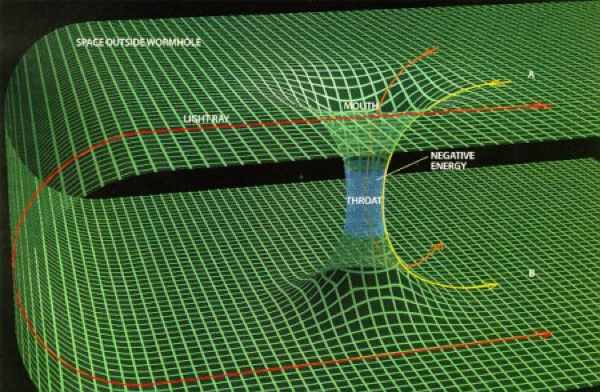
All our understanding of time travel is based on what we know of the physical properties and interactions of the Universe. We have devised a branch of mathematics currently separate from physics to describe the laws of physics on a microscopic scale, and we call it quantum physics. This branch strongly theorizes the existence of Einstein-Rosen Bridges, named after the two scientists most responsible for our understanding of them.
They are more popularly called wormholes, and they are holes that have ripped through the fabric of spacetime. If we could make use of them, the shortest distance between two points would no longer be a straight line but zero, caused by puncturing spacetime at the point of origin and at the point of destination, just like poking holes through a sheet of paper; then spacetime is effectively folded until the two points overlap, and the traveler passes through from A to B, and spacetime is unfolded to its original state. No physical movement occurs, but the destination may be at the other end of the known Universe, and the spacecraft would have neither approached, nor surpassed the speed of light, but simply teleported.
This seems to allow the possibility of travel into the past by avoiding the speed of light altogether, but what it does not account for is what goes on inside a wormhole. Physics has no idea, except to say that the laws of physics do not exist as we know them, or do not exist at all, inside wormholes. If we attempt to comprehend travel through wormholes in our terms of physics, then we are not addressing the issue to begin with, and have not yet left square one.
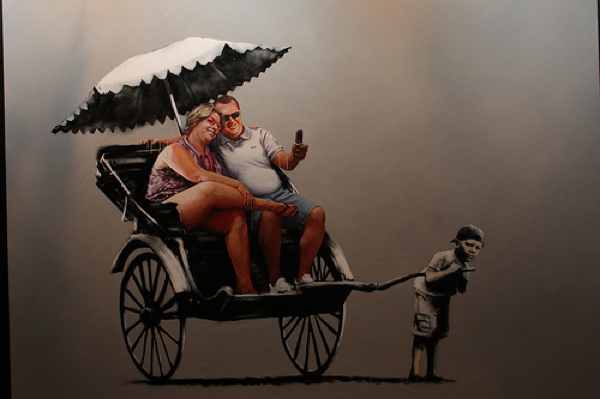
Let’s take a short respite from the math. A theory held firmly by hundreds in the higher mathematics community, including Stephen Hawking, is that we already have verifiable proof that there can be no faster-than-light travel: there is no one from the future walking among us right now, at least as far as we know. To this end, meetings have been scheduled and attended by academics and plain old fans of science fiction, in which they sit and converse on the subject while waiting for visitors from the future to show up at the meetings. The idea is that in the future, people will know of these meetings in the same way that we know about WWII; it’s history to us. So if time travel should ever become reality, the travelers ought fairly to return to waiting people in the present and prove it.
So far, of course, this does not appear to have happened, and since we speak here in terms of the entirety of the future from now until the end of time, there should be quite a lot of travelers from many points throughout the future showing up at many points throughout their past. A fun criticism of this is the question, “Why in the world would anyone want to visit our time? 1 September 1939 makes sense, but today? If they were to warn of us something, what would it be? Would they return with some brilliant philosophy about how to effect real world peace?
Imagine: you can travel to any point in the past you like. What would you like to see? 90% or more of prospective travelers would like to see if Jesus Christ really existed. But would you take it upon yourself to return to now and avert the imminent war between Israel and Hamas? No one has yet.
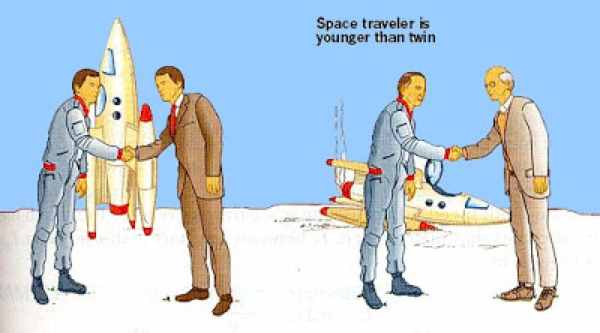
This paradox deals more properly with travel into the future. It involves two newborn, identical twins, one who stays on Earth, and one who travels to Proxima Centauri, the nearest star, 4 light years away. If the spacecraft travels at 80% the speed of light, which amusingly seems more realistic, the round trip will take 10 years. That means the twin on Earth will be 10 years old when his brother returns.
But on the spacecraft, the crew observes Promixa Centauri and Earth also moving with relation to the craft, and this causes Points A and B to shorten to a distance of 2.4 light years, not 4. Each leg of the journey will take 2.4 light years divided by the speed, 80% of the speed of light, for a duration of 3 years one way, 6 round trip. Thus, the twin onboard will have aged 6 years in the same relative span of time. This much is not logically impossible.
What is impossible is the effect of one twin traveling 101% or more of the speed of light. This would, at least according to this scenario as we understand it, cause him to travel into the past and cease to exist, i.e. disappear from onboard, and not return to his brother on Earth.
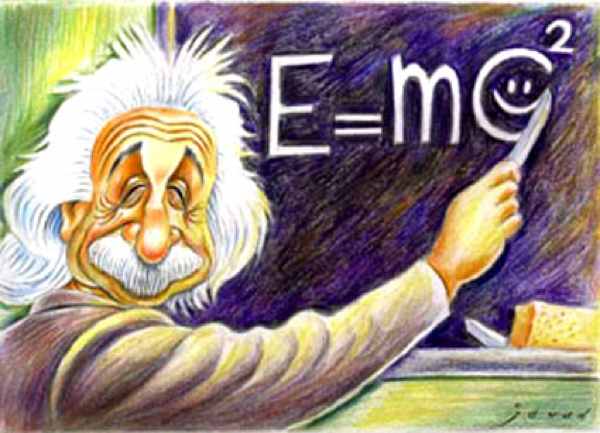
The most famous equation in the history of mathematics describes the relationship of energy and mass. In 1942, it was notoriously seized upon as a great idea for a powerful new weapon. Einstein had no idea it could be used to build a bigger, better bomb, and wept when Enrico Fermi and Robert Oppenheimer explained what was going on at Oak Ridge, Tennessee.
Aside from explaining how much energy is contained in matter of any size, it also provides an exploration into what happens to mass when it travels faster. The faster something travels, the more energy is required to sustain its travel. As an object approaches the speed of light, it approaches infinite mass, and thus requires infinite energy to continue propelling it forward.
This does not prohibit traveling into the future, since all an object has to do is approach the light barrier. You approach it when you walk into the kitchen to get a beer. The distance into the future you have traveled is too insignificant to matter. But technically you gain an equally insignificant amount of mass. The energy required to propel a large object, like a spacecraft, any meaningful distance into the future, as that meaning relates to our frame of reference, would be greater than or equal to the energy currently in VY Canis Majoris, the largest star we know of.
But to break the light barrier would cause the traveler to go into the past, and this would require infinite, and then greater than infinite, energy. This is impossible to achieve.
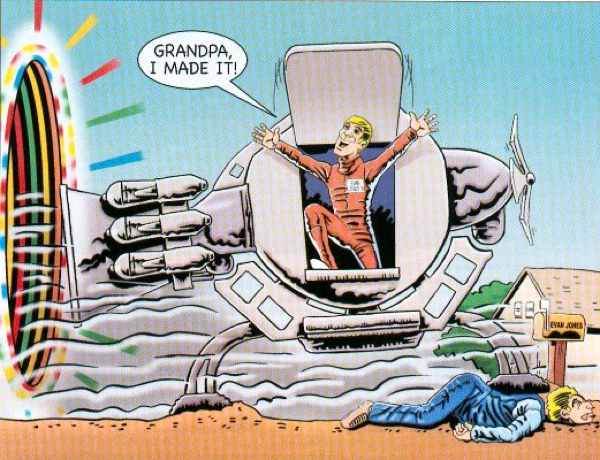
This is a paradox as well, and deals with one specific scenario: the invention of the first time machine. The inventor travels back in time in an effort to make his grandfather and grandmother fall in love, only to accidentally kill his grandfather (see #2). Now, desperate to exist in the future, he sleeps with his future grandmother and fathers his own father, thus enabling himself, in the future, to travel back in time and father his father again.
This paradox is illogical because it describes an effect in the future occurring before its cause in the past. Suppose you were to travel back in time to before the Big Bang, somehow cause the Big Bang and thus create the Universe. In terms of fate, this would happen in order to enable you, 13.5 billion years later, to invent the time machine and travel back to create the Universe so the time machine could be invented. It is fundamentally insensible.
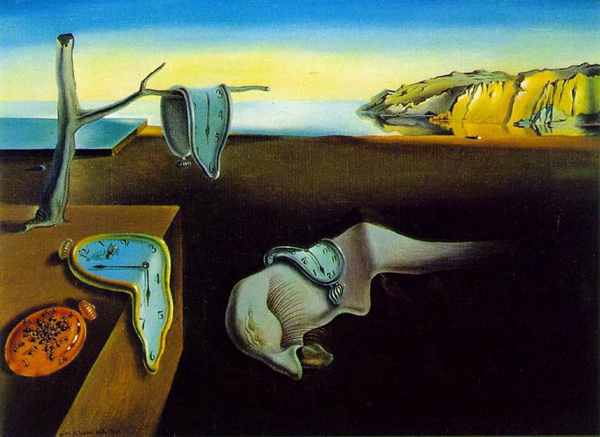
This is essentially the negative version of #3, and is also called the Grandfather Paradox. Traveling into the past must be logically impossible because it would enable you to go back in time and kill yourself. But if you die, how will you travel into the past from the future to kill yourself? Critics, especially science fiction fans, are quick to point out that our understanding of mathematics expands every day thanks to people like Newton, Einstein, Hawking, and Michio Kaku, and with it comes an expanded understanding of the logic involved in time travel scenarios.
The best current counter to the temporal paradox is the Multiverse, which describes an infinite number of yous doing an infinite number of things at an infinite number of points throughout your life. You may be stabbed in a bar fight at 100 years old in another Universe, but die of cancer as a child in this one. Imagine a Universe without Listverse. Our current understandings of quantum mechanics and quantum physics lends strong credence to the possibility that the Multiverse is a reality. It would negate the temporal paradox, and several others, allowing you a future after you have killed yourself. But there is still no fully formed theory of the Multiverse’s existence, and until there is, this paradox stands.

Frankly, all the previous entries are based more in terms of logic than in pure mathematics, precisely we can only surmise everything related to time travel according to our very superficial comprehension of it. Albert Einstein’s life work centered on what we now call Relativity. He postulated two theories of it, but the next step, an infinitely more important one, is to unify the General Theory of Relativity with electromagnetism. Einstein died working on this, and today’s eggheads have taken only baby steps forward. The “highest” form of mathematics to date is called “M Theory,” which is not even fully described yet. It’s practically a religion to mathematicians, because so little is understood about it that some don’t believe in it.
It identifies 11 dimensions in the Universe, not just 4, and its champions expect that it can unite the 5 differing string theories that preceded it, and take what may be the only step left beyond: a unification of the physical properties and laws of all 4 forces of the Universe. M Theory seeks a common ground between General Relativity and Quantum Gravity with the goal of combining all 4. To do so is to take a mathematical look at how the Universe appeared, and how it acted, when it was still an infinitely small point packing all the matter and energy that exist in it today. To comprehend such physics would enable a mathematical comprehension of how to manipulate spacetime itself and pre-vert to a time in the future or revert to a time in the past. Until someone unifies all 4 forces into a single physical quantity with a value for each point in spacetime, we aren’t going any-when.








